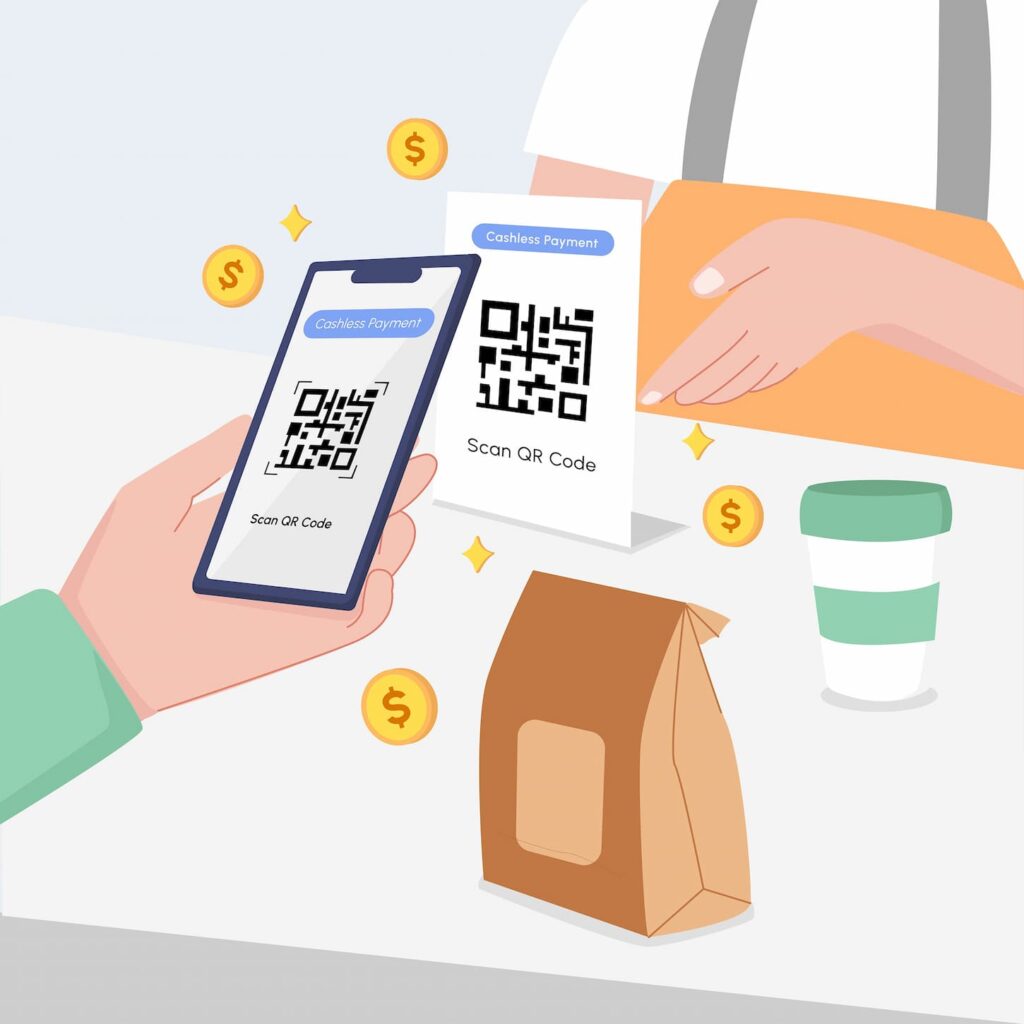
You’ve seen QR codes everywhere—from menus to ads—but how do those little squares actually work? In this simple guide, we’ll break down QR code technology to show how it stores and delivers data instantly. We will also explain why they’ve become such a powerful tool for businesses and everyday users alike.
QR codes aren’t just convenient—they’re incredibly versatile. They can store links, contact information, product details, payment info, and much more, all in a tiny, scannable square. Understanding how QR codes function can help you use them more effectively, whether you’re a consumer looking for quick access to information or a business aiming to boost engagement and efficiency.
Table of Contents
- What Are QR Codes?
- History and Development
- How Do QR Codes Work?
- Types of QR Codes
- Data Storage and Capacity
- Format Information and Decoding
- Mask Patterns and Readability
- Product Packaging and Labeling
- Marketing and Advertising Applications
- Best Practices for Using QR Codes
- Benefits of Using QR Codes
- QR Code Analytics and Tracking
- Safety and Security Considerations
- Design and Customization Options
- Social Media Integration
- Wrap-Up
What Are QR Codes?
A QR code, short for Quick Response code, is a two-dimensional barcode developed in 1994 by Masahiro Hara of Denso Wave. Unlike traditional barcodes that store information in a single line, QR codes arrange data within a matrix of black squares on a white background, enhanced with fiducial markers that make them easily detectable by cameras.
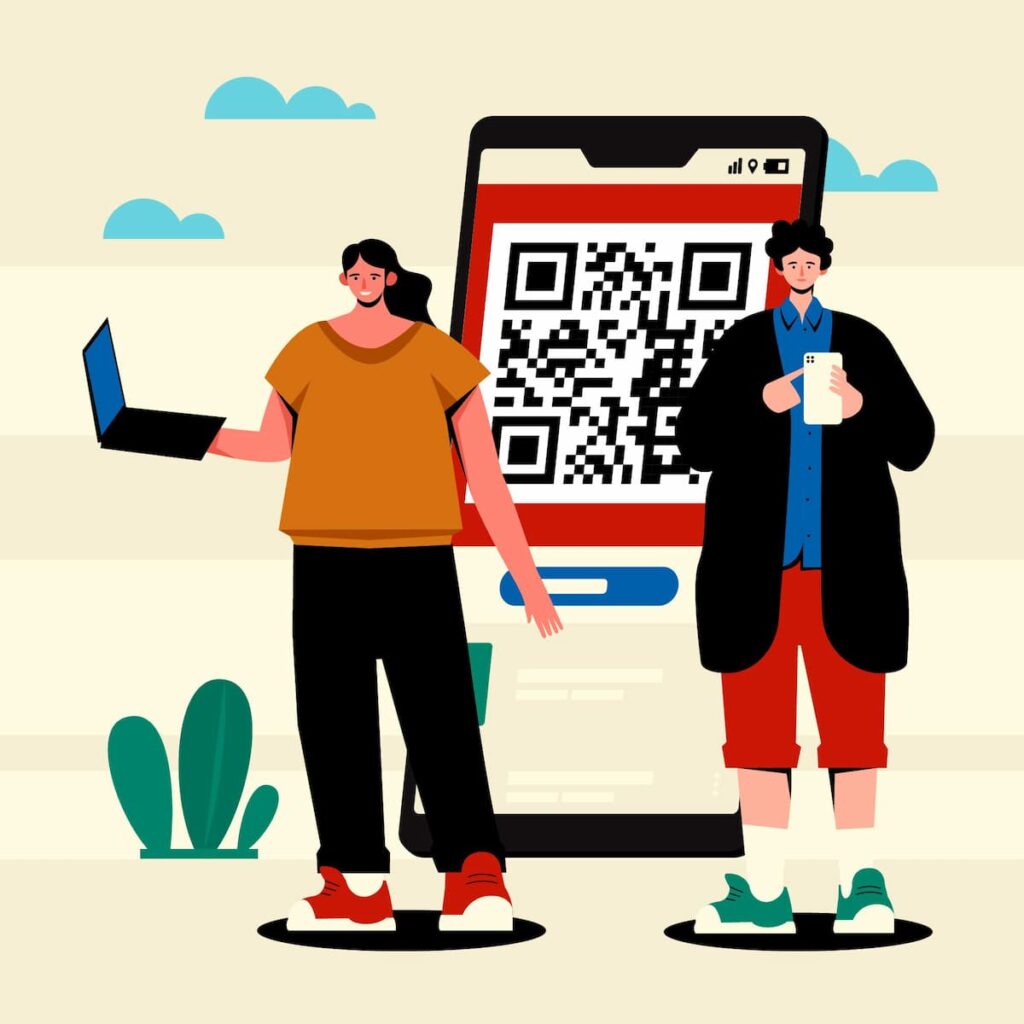
QR codes can encode information in four standardized modes—numeric, alphanumeric, byte/binary, and kanji—making them highly versatile for different types of data.
Compared to standard barcodes, they support error correction, allowing them to remain scannable even when partially damaged or obscured. They also enable faster reading speeds and greater data capacity, which has led to their widespread adoption in areas such as product tracking, identification, time management, and marketing campaigns.
History and Development
Origins of the QR Code
The QR code was invented in 1994 by Denso Wave, a subsidiary of Toyota, to improve efficiency in Japan’s automotive industry. At the time, traditional barcodes could only hold a small amount of information, which limited their usefulness in tracking the many parts required for car manufacturing.
QR codes solved this by offering a two-dimensional design capable of storing far more data while also allowing for quicker scanning speeds.
Expansion and Everyday Use
These advantages soon pushed QR codes beyond the factory floor. As smartphones with built-in cameras and QR scanning apps became mainstream, QR codes transitioned into everyday life—appearing on marketing materials, restaurant menus, event tickets, and even digital contact cards.
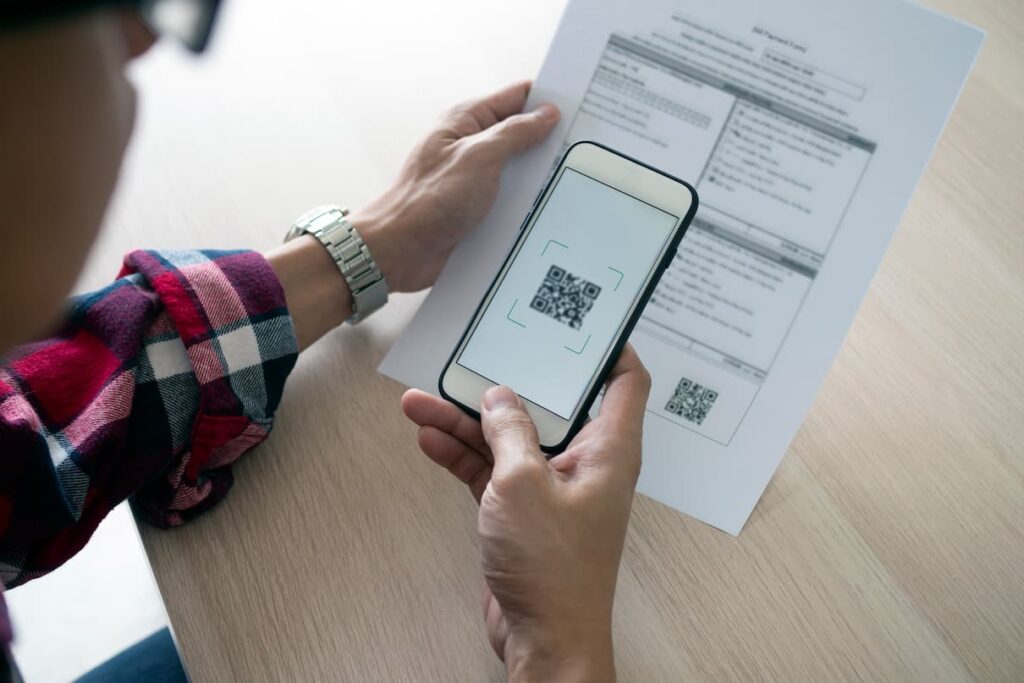
Their flexibility was further boosted by Denso Wave’s decision not to enforce the QR code patent, which encouraged the development of countless QR code generators and scanners. This openness transformed QR codes into a global standard, widely adopted across industries and daily activities.
How Do QR Codes Work?
Structure and Components
QR codes are built from a grid of black and white squares that represent binary code—black modules signify “on” and white modules signify “off.” This binary system allows devices to quickly read and translate the encoded information.
To ensure accurate scanning, QR codes include several key structural elements:
- Finder patterns: Located at three of the four corners, these large squares help scanners detect the QR code and determine its orientation.
- Alignment patterns: Smaller squares positioned within the code, used to correct for distortion and maintain precise positioning.
- Timing patterns: Alternating black and white modules that run between finder patterns, enabling scanners to determine the data grid’s scale and module width for accurate interpretation.
Together, these components create a robust design that allows QR codes to be scanned quickly and reliably, even when tilted, partially damaged, or viewed from different angles.
Error Correction and Data Integrity
One of the key strengths of QR codes is their ability to remain readable even when damaged. This is achieved through error correction, a process that allows scanners to recover lost or obscured data if the code is smudged, scratched, or partially missing.
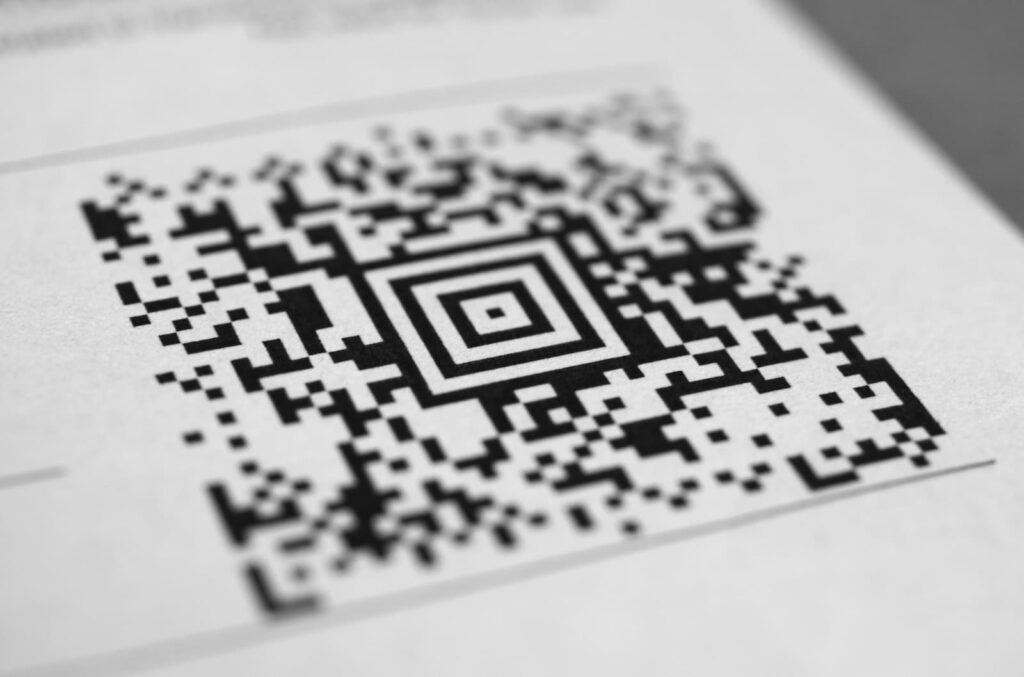
QR codes use the Reed–Solomon error correction algorithm, which can reconstruct data accurately even if up to 30% of the code’s surface is compromised. Depending on the application, different error correction levels can be applied—higher levels provide greater resilience but reduce overall storage capacity, while lower levels maximize data storage but are less resistant to damage.
By combining error correction with standardized encoding modes, QR codes maintain strong data integrity. When you scan a QR code, this ensures reliable scanning and accurate information retrieval across a wide range of environments and conditions.
QR Code Generators and Creation
QR code generators are tools that transform raw data into scannable codes by encoding the information, applying error correction, and arranging structural patterns based on the selected version and error correction level.
These generators can produce two main types of QR codes:
- Static QR codes: Once created, the stored data cannot be altered. They are ideal for permanent information such as serial numbers, Wi-Fi credentials, or fixed web links.
- Dynamic QR codes: These codes point to a redirect link, allowing the underlying content to be updated without changing the printed code. This makes them particularly useful for product packaging, marketing campaigns, and digital promotions where content may need to change over time.
Modern QR code generators also provide customization options, enabling businesses to add logos, adjust colors, or modify design elements to align with branding while maintaining readability. This balance of function and design has helped QR codes become both practical and visually adaptable across industries.
Scanning and Reading QR Codes
QR codes are designed for quick and effortless access to information. You can scan a QR code image using dedicated QR code scanners or, more commonly, through the built-in camera apps on mobile devices. When scanned, the unique pattern of black and white modules is decoded and instantly translated into readable information such as website URLs, phone numbers, Wi-Fi credentials, or payment details.
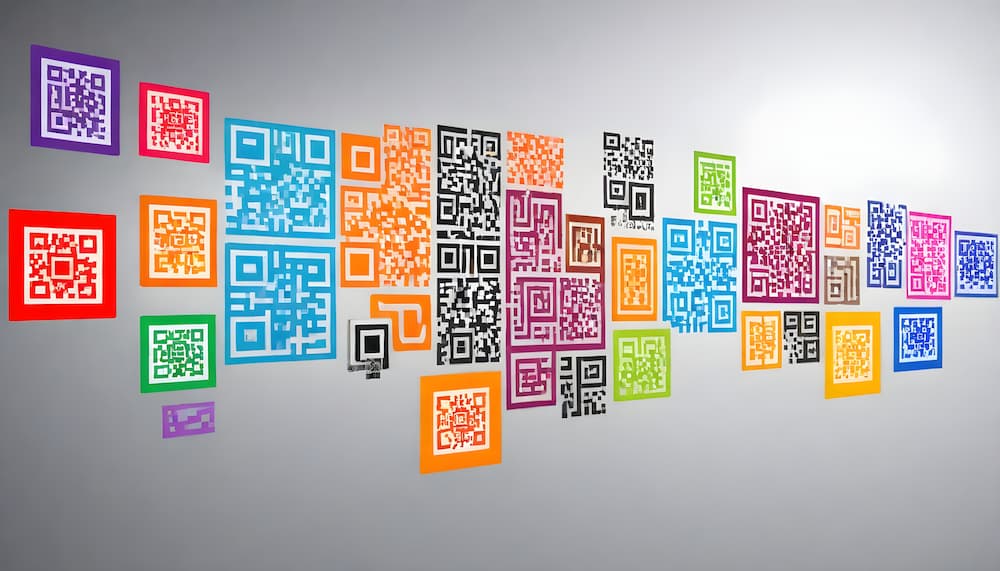
Most modern smartphones now come with native QR code scanning capabilities, removing the need for third-party applications. This widespread accessibility has made QR code scanning a fast, reliable, and convenient method for connecting people with digital content.
Because of this ease of use, QR codes have become a popular tool in marketing, advertising, and customer engagement—allowing businesses to seamlessly bridge the gap between physical and digital experiences.
Types of QR Codes
Static QR Codes
Static QR codes are very much like barcodes in the sense that they offer limited storage capacity. Pumping tons of information into it will affect its quality.
Also, a static QR code is meant for one use —this means you cannot change or delete the information contained therein. Unlike dynamic QR codes, they don’t offer the chance to track scanning activity.
QR.io allows you to create multiple QR codes of this type for free, such as:
- URL QR code (Web page)
- File QR code
- VCard QR code (Business card)
- Social media QR code
- Text QR code
- Email QR code
- WhatsApp QR code
- Call QR code
- PDF QR code
- App QR code
- Video QR code
- PayPal Code
Dynamic QR Codes
A dynamic QR code, on the contrary, offers much more flexibility and storage power, and you can modify it and add more data even after it’s printed.
Dynamic QR codes allow for detailed, real-time scan monitoring, including the number of scans made and geolocation. QR.io allows you to create dynamic codes with these functionalities:
- Multi-URL QR code
- Editable codes that let you create or remove URLs when your QR code is live
- Short dynamic URL for storing data online
- Analytics results
- Google Analytics integration
- Email notification
- Expiry feature
- Integration with other software like HubSpot and Zapier
- Bulk QR code solution
- API Integration
These unique features enable an absolutely compelling experience, full of versatility and effectiveness.
Data Storage and Capacity
One of the advantages of QR codes is their ability to store a significant amount of information in a compact space—no matter if it’s micro QR codes. Depending on the version and error correction level, a QR code can hold up to 7,089 digits or 4,296 alphanumeric characters, including special symbols.
QR codes support four main data types:
- Numeric – efficient storage of digits.
- Alphanumeric – numbers plus letters and some symbols.
- Byte/Binary – broader range of characters, ideal for digital data.
- Kanji – optimized for Japanese character sets.
This flexibility allows QR codes to be adapted for a wide variety of applications. From product packaging and inventory management to restaurant menus and digital tickets, their data capacity makes them a versatile tool for both business and consumer use.
Format Information and Decoding
Every QR code contains format information, which specifies the error correction level and the mask pattern applied to the code. This data is essential because it guides the scanning device in correctly interpreting the grid of black and white modules.
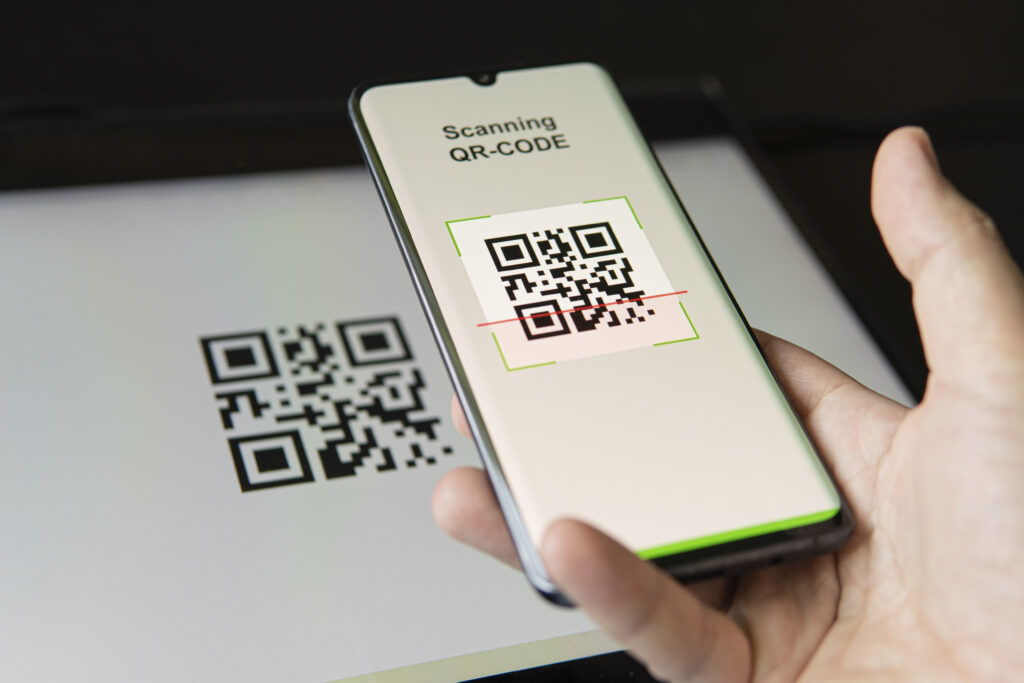
Decoding a QR code begins with reading this format information, followed by extracting the encoded data from the grid. During this process, QR code decoders apply algorithms—such as Reed–Solomon error correction—to detect and correct errors, ensuring that the original data can be retrieved accurately even if the code is partially damaged.
In practice, this decoding is performed automatically by QR code readers or the camera apps built into most smartphones. The result is near-instant translation of the visual pattern into usable information, such as a URL, text string, or other stored data.
Mask Patterns and Readability
Mask patterns play a crucial role in improving the readability of QR codes. By selectively inverting certain modules, these patterns reduce visual interference and prevent large areas of uniform color that could make the code difficult to scan.
Mask patterns can also be customized to enhance the visual appearance of a QR code without compromising its functionality. Despite these design adjustments, the use of mask patterns does not affect scanning accuracy, ensuring that the code remains fully readable by devices.
As an integral part of the QR code structure, mask patterns help maintain reliable scanning and accurate data retrieval across different surfaces, lighting conditions, and viewing angles.
Product Packaging and Labeling
QR codes have become a common feature on product packaging, offering consumers quick access to additional information such as instructions, nutritional facts, or usage tips. Beyond informing customers, QR codes also help businesses track products and manage inventory, improving efficiency across the supply chain.
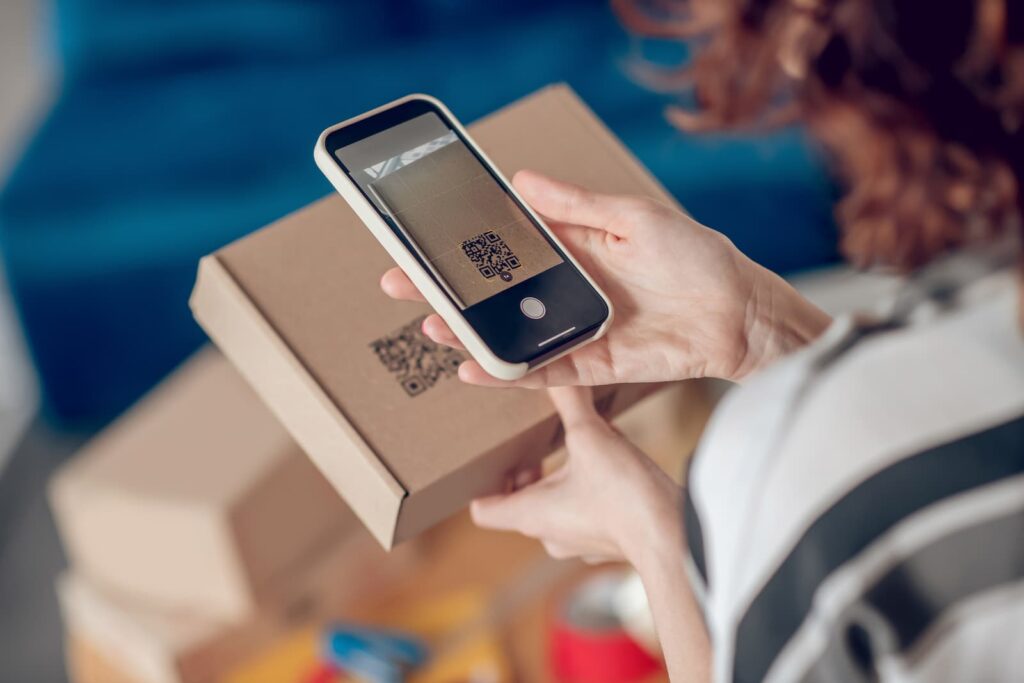
In addition to practical applications, QR codes on packaging can serve marketing purposes, promoting special offers, discounts, or loyalty programs. By providing an easy, interactive way to access content, QR codes enhance the overall customer experience and strengthen engagement with the brand.
Marketing and Advertising Applications
QR codes are widely used in marketing and advertising campaigns to instantly connect users with digital content. They can direct consumers to web pages, social media profiles, videos, or special promotions.
Beyond access, QR codes allow marketers to track engagement and measure campaign effectiveness, providing valuable insights into consumer behavior. By combining convenience with interactivity, QR codes have become a versatile tool that enhances the customer experience while supporting data-driven marketing strategies.
Best Practices for Using QR Codes
Ensure Clarity and Functionality
QR codes should be clear, scannable, and user-friendly to guarantee a positive experience. Testing each QR code before use is essential to confirm it directs users to the correct content and works under different conditions.
Integrate with Marketing Channels
QR codes are most effective when used alongside other marketing channels, such as social media, email campaigns, or printed materials. This integration creates a seamless, engaging journey for users and maximizes reach.
Customize for Branding
Customizing QR codes to match brand identity—through colors, logos, or design elements—enhances visual appeal and reinforces brand recognition, making the codes both functional and memorable.
Focus on User Experience
Ultimately, all QR code strategies should prioritize ease of use and convenience, ensuring that scanning is quick and effortless. When done correctly, QR codes can deliver measurable marketing impact while providing a smooth experience for users.
Benefits of Using QR Codes

Convenience and Accessibility
QR codes offer a quick and efficient way to access information, making them a popular tool in marketing, advertising, and everyday interactions. Users can instantly connect to websites, videos, menus, or contact details with just a scan.
Product Tracking and Inventory Management
Beyond consumer use, QR codes help businesses track products and manage inventory, improving supply chain efficiency and reducing errors in logistics and operations.
Enhanced Customer Experience
By providing additional information—such as instructions, nutritional facts, or usage tips—QR codes enrich the customer experience, making it easier for users to engage with products and services.
Driving Sales and Promotions
QR codes are an effective way to promote special offers, discounts, or loyalty programs, helping businesses increase engagement, drive sales, and boost revenue.
Contactless Interaction
QR codes enable touch-free access to information, reducing physical contact—a key advantage for hygiene-sensitive environments like restaurants, hospitals, or events.
Data Analytics and Insights
Dynamic QR codes allow businesses to track user interactions, providing valuable analytics on engagement, location, and scanning behavior to inform marketing strategies.
Versatility Across Platforms
QR codes can be used in both physical and digital environments, from packaging and print ads to websites and social media, making them highly adaptable to a wide range of applications.
Cost-Effective Marketing
QR codes are inexpensive to generate and deploy, making them a low-cost solution for businesses to connect consumers with digital content.
Easy Updates with Dynamic Codes
With dynamic QR codes, businesses can update the linked content without changing the printed code, ensuring information stays current without additional printing costs.
Enhanced Engagement
QR codes encourage interactive experiences, such as games, surveys, or augmented reality content, which can increase user engagement and brand loyalty.
QR Code Analytics and Tracking

Understanding User Behavior
QR code analytics provide valuable insights into how users interact with codes, including scanning frequency, location, and device type. This information helps businesses understand user preferences and behavior patterns.
Measuring Marketing Effectiveness
By tracking interactions, businesses can assess the success of marketing campaigns linked to QR codes. Analytics reveal which campaigns drive the most engagement and conversions, enabling data-driven decision-making.
Performance Monitoring and Optimization
QR code tracking allows organizations to monitor code performance over time, identifying underperforming codes or content that needs improvement. This ensures campaigns remain effective and continuously optimized.
Enhancing Campaign Impact
Integrating analytics and tracking into QR code strategies enhances overall campaign effectiveness, providing actionable data that supports better targeting, improved user experience, and higher ROI.
Safety and Security Considerations
Potential Risks
While convenient, the malicious QR code is somehow present, lending itself to tactics such as phishing schemes and malware distribution. Scanning a code from an unknown or untrusted source could lead to harmful websites or unintended downloads.
Secure Generation and Usage
To minimize risks, QR codes should be created using secure generators and handled in a way that prevents unauthorized access or tampering. Businesses should ensure that their codes are distributed safely and verify that the linked content is legitimate.
User Awareness
Users should exercise caution when scanning unfamiliar QR codes, especially those found in public spaces or received via unsolicited messages. Awareness and vigilance are key to avoiding potential threats.
Protective Tools
The use of trusted QR code scanners and secure platforms can help detect and block malicious codes, ensuring safe interaction for both consumers and businesses.
Design and Customization Options
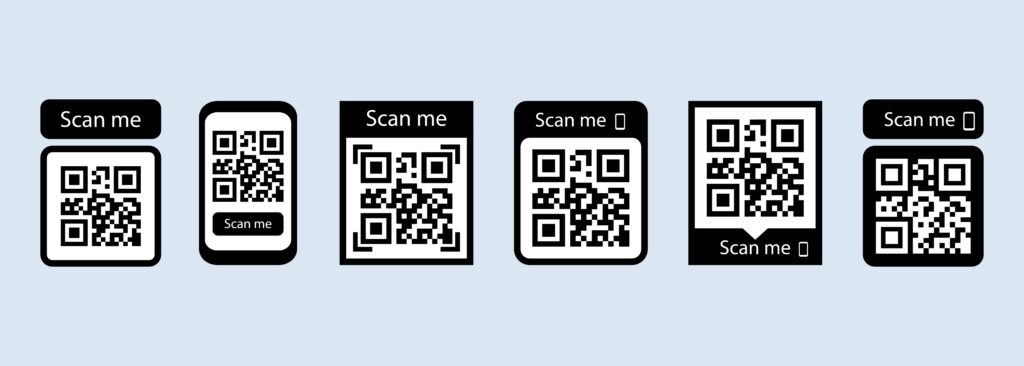
Branding and Visual Identity
QR codes can be customized to align with a brand or marketing campaign, enhancing visual appeal and creating a cohesive user experience. Incorporating brand colors, logos, or patterns helps reinforce recognition and trust.
Creative Design Elements
Customization options extend to different shapes, sizes, and formats, allowing QR codes to be adapted for a variety of mediums—from packaging and posters to digital screens. Thoughtful design ensures that the code remains scannable while standing out visually.
Enhancing Engagement
Well-designed, customized QR codes can increase user engagement and interaction. By making codes more appealing and aligned with a campaign’s theme, businesses can encourage users to scan more frequently and interact with the linked content.
Marketing Effectiveness
Custom QR codes not only attract attention but also boost the effectiveness of marketing campaigns, helping brands drive conversions, track engagement, and create a memorable experience for consumers.
Social Media Integration
Direct Access to Profiles
QR codes provide a convenient way for users to access social media profiles, allowing brands to connect audiences to platforms instantly without requiring manual search or typing.
Promoting Engagement
QR codes can be used to drive participation in contests, giveaways, or special campaigns, encouraging user interaction and boosting engagement on social media channels.
Sharing Additional Information
By linking to handles, hashtags, or curated content, QR codes offer a simple way for users to explore related social media content, enhancing the overall user experience and making campaigns more interactive.
Enhancing Campaign Effectiveness
Integrating QR codes with social media strategies improves campaign performance, increasing visibility, tracking engagement metrics, and encouraging meaningful interaction between brands and their audiences.
Future of QR Codes
The future of QR codes appears bright, with adoption continuing to grow across a wide range of industries. Technological advancements, including improved error correction and expanded data storage capacity, will make QR codes even more reliable and versatile.
Emerging technologies, such as augmented reality and artificial intelligence, are expected to open new possibilities for interactive and personalized experiences.
As businesses and consumers increasingly seek convenient, efficient ways to access and share information, QR codes will continue to evolve, driving innovation and shaping the way we interact with the digital world.
Wrap-Up
QR codes have proven to be a powerful and versatile tool, offering a convenient and efficient way to access information across multiple contexts. From product packaging and digital menus to social media integration, QR codes enhance the user experience by providing instant, seamless connections to digital content.
Their widespread adoption not only improves engagement and operational efficiency but also opens doors for innovative applications. With continued technological advancements and growing usage across industries, the future of QR codes promises further innovation, making them an essential component of modern marketing, communication, and information-sharing strategies.
